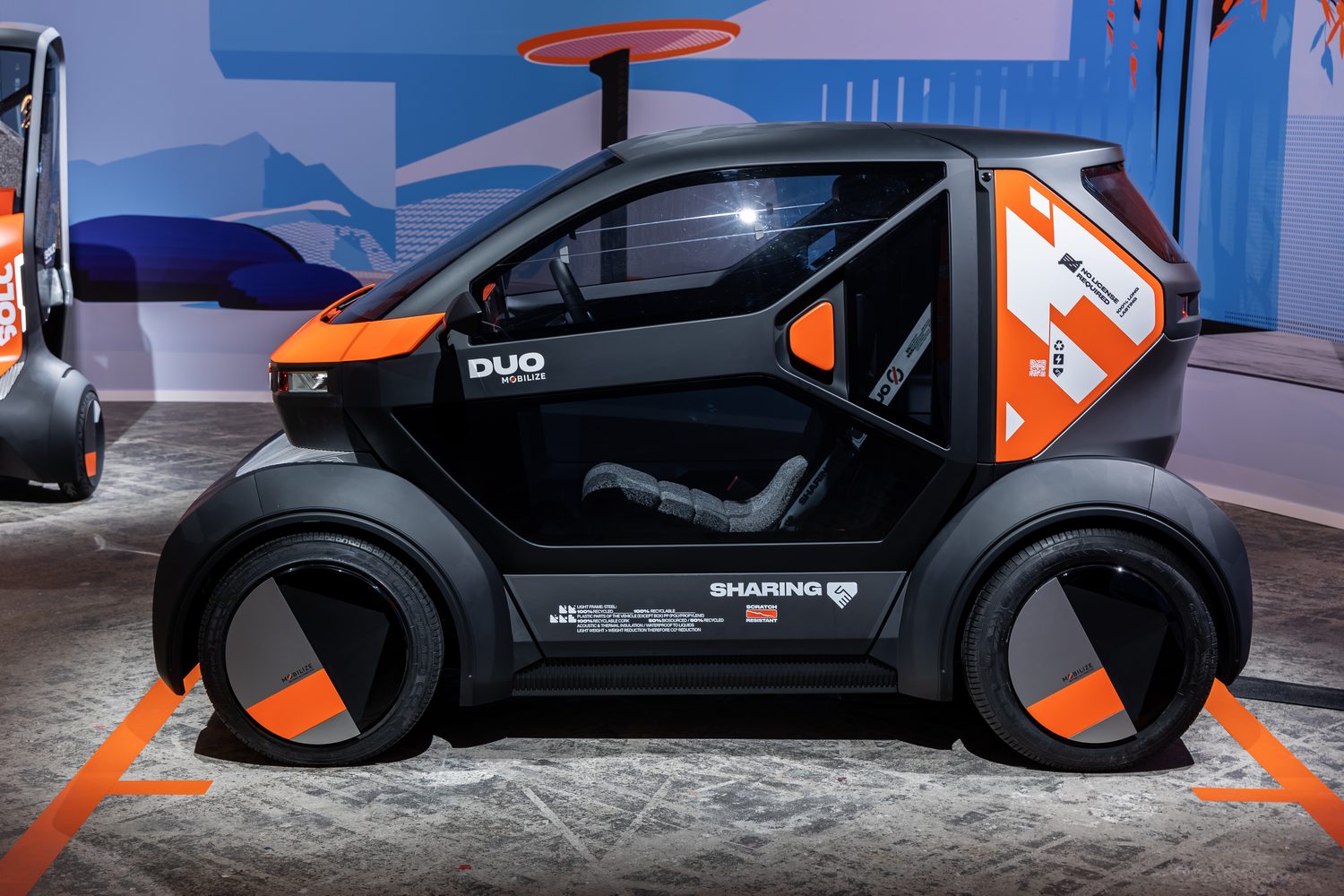Mobilize, Renault's recently-announced spinoff that focuses on car sharing, micro-mobility and energy supply, has announced that it's going to install a 200-strong network of rapid-charging hubs across Europe.
Rest, relax, charge
These will, eventually, be seriously impressive locations, akin to a high-end petrol station but designed to allow drivers (and passengers) to rest and relax while their car is charging.
Each hub will have six charging points, capable of delivering as much as 400kW of power to each car. Yasmine Assef, Performance Director of Mobilize's Energy Department, told CompleteCar.ie that "the idea is that each car that plugs in can get the maximum power that it can take. We can't supply 400kW to all six cars at once, but most cars will charge at up to 270kW or near that, so we can supply the maximum to all."
Mobilize plans to use on-site battery storage to provide an energy buffer, which will reduce the load on the local electricity network during peak consumption times. Assef told CompleteCar.ie that "we want to use second-life batteries for these storage systems. OK, at the start probably we won't have enough second-life batteries to go around, so we will have to use some new batteries, but the idea is to eventually use second-life cells. Plus we will use solar panels on these sites, so the combination of the solar panels plus the on-site storage will make these sites very virtuous."
The hubs will have rest areas, coffee shops, toilets and even play areas for kids. Well, eventually they will - initially some of the locations will be at Renault dealerships, but the plan is for all locations to be open 24/7 and they will not be limited to Renault Group brands. Any EV driver will be able to stop and top up for a fee.
Mobilize will come to Ireland
Will Ireland get these smart new charging hubs? The answer is almost certainly yes. Renault Ireland told us that "Mobilize is part of the future plan for all markets. In terms of the market level detail for Ireland we don't have specifics just yet." The first wave of these charging hubs - all of which will be located fewer than a five-minute drive from major roads - will be in France, Spain, Italy and Belgium, with other markets to follow.
Mobilize also has plans for wheeled vehicles of its own. The Mobilize Duo we've seen before - it's a two-seat electric microcar, a rival to Citroen's Ami (albeit with the driver and passenger sat behind one another, not side-by-side as in the Citroen). The Duo is due to start appearing on Europe's streets with micro-rental and car-sharing services next year, and it will be joined on the road by the Bento model, which ditches the back seat in favour of a big 700-litre cargo box, designed for 'last-mile' deliveries.
The Duo is made of tough, unpainted plastic and is already heavily recycled - 50 per cent of the materials used, including an interesting cork-like cabin trim, are recycled and the whole car itself is 95 per cent recyclable. The grey plastic of the body gets a pattern, somewhere between the whorls of a fingerprint and the weave of carbon-fibre, which is designed to disguise scratches and bumps and keep everything looking fresh. Inside, there's a big orange box that is both dashboard and media centre, and to which your mobile phone connects, bringing both your music and your preferences with you. There's no heater, but the seats and windscreen are heated for comfort on cold days. The doors open up and forwards, like a Lamborghini's, but that's as close to Lambo as you'll get with a maximum speed of 80km/h and a 140km range.
Incentives for good behaviour
One of the problems with a micro-renting service such as that for which the Duo is designed is of course getting people to leave the car in as good a condition as they found it. Mobilize says that this will be done by incentive - offering free mileage and cheaper rentals to those who park the cars back in a Mobilize bay and leave them in good order.
As well as a two-seat car, Mobilize is looking at the potential of a single-occupant vehicle. The brand has revealed a concept called the Solo, which is rather like an e-scooter with a roof and bodywork.
The Solo gets two front wheels and is rear-wheel steered, and you don't quite stand on it, but instead you prop your bottom on a small shelf, and steer using a steering-wheel-esque control yoke. As with the Duo, the Solo comes with an orange 'boom-box' dashboard that allows you to bring your music and podcasts along for the journey. The Solo's gawky body design also allows them to be stacked closely, nose-to-tail, almost like supermarket trollies.
The idea behind the Solo is that e-scooters, while popular, don't cover all bases. "We have a mindset that we want to be as inclusive as possible" said Patrick Lecharpy, vice president of design at Mobilize. "If you have today an e-scooter on two wheels, it's not for everybody. It's not accessible for certain categories of people." Mobilize's plans for the Duo and Solo (assuming the Solo ever proceeds beyond the concept stage) is that they can fill in the gaps in public transport services across large, spread-out cities, especially in areas where it might not be financially viable to put in bus or train routes.
































